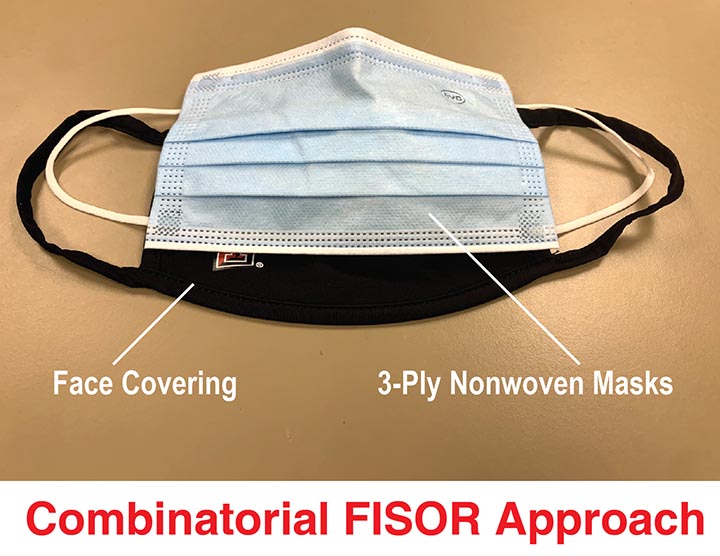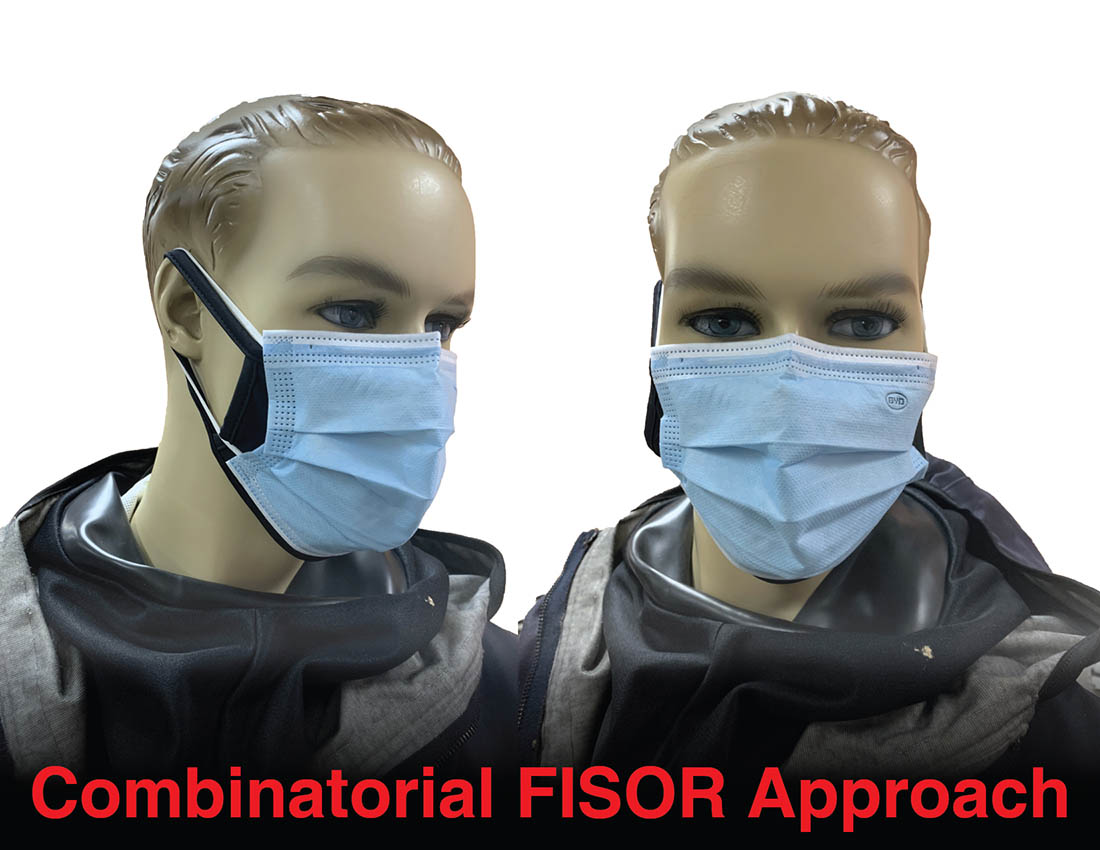With COVID-19 now making its third major wave with Omicron, even vaccine-boosted people have been infected with this variant, demanding countermeasures such as the use of masks, avoiding gatherings and enhancing hygiene measures.
Medical experts and the available data clearly point out that vaccines have reduced the hospitalization and severity of the disease. The nature of this variant is such that while the vaccinated may not fall severely sick, they may carry the virus with or without symptoms. As a way of enhancing safety, infectious disease experts have called for the use of highly protective masks, such as nonsurgical filtering facepiece respirators (FFRs). Our research over the past two years has shown that face coverings are effective in reducing the infection (Ayodeji and Ramkumar, 2021). While ordinary face coverings do not offer maximum protection compared to three-ply nonwoven masks and filtering facepiece respirators (FFRs), they do have some role to play in countering the spread.
Most recently with the emergence of the Omicron variant, masks with enhanced protection capabilities are being recommended by medical experts. In its recent guidelines, the U.S. Centers for Disease Control and Prevention advises to use a mask that efficiently filters fine particles, while providing good fit and comfort for consistent use by the wearers.
We propose here an alternate masking strategy that uses a combinatorial approach of having cloth face coverings and three-ply nonwoven masks. Limited results from our laboratory show that such a structure can provide enhanced filtration compared to ordinary cloth face coverings or surgical masks alone.
Alternate masking strategy
Filtration experiments in our laboratory and the information available in public domain clearly show that FFRs like N95 and R95 offer superior protection against airborne particles and droplets. Such FFRs are valuable in medical scenarios where healthcare personnel are dealing with COVID-19 patients and for people who have serious health conditions, such as those who are immunocompromised.
No doubt, these FFRs are high-quality masks, offering the highest level of protection, but these are single-use items due to stringent hygiene and safety requirements. As these filters have tight fit to avoid leakage, some may feel uncomfortable over prolonged use. Additionally, such masks may not be recommended for those who have medical difficulties that involve breathing difficulty.
We propose here an alternate masking strategy that uses a combinatorial approach of having cloth face coverings and three-ply nonwoven masks. Limited results from our laboratory show that such a structure can provide enhanced filtration compared to ordinary cloth face coverings or surgical masks alone. The combined structure, which has enhanced filtration due to the addition of a nonwoven three-ply mask to the cloth covering is termed as FISOR. Early in the pandemic, the need to enhance the filtering capability of face coverings was proposed (Ramkumar, Advanced Textiles Source, 2020). However, the masking strategy on using the face coverings and nonwoven surgical masks was not proposed, which we propose in this report.
FISOR masks
As briefed above, in circumstances where FFRs are not possible, a combinatorial approach involving cloth face covering and nonwoven (spunbond-meltblown-spunbond) three-ply surgical masks can be employed. While this may not be equal to the wearing of FFRs, it can provide a balance of good filtration and comfort, when worn with proper fit.
As most of the face coverings available in the market are cotton based, it can provide good feel and next-to-skin comfort. Furthermore, as these face coverings are made using dyed or finished cloth, they are absorbent. When people sneeze or cough, the moist droplets can be absorbed by the cloth layers, preventing the immediate transmission of viral/microbial-loaded droplets. Hence it is recommended to wear cloth face coverings next to the nose and mouth.
Commercially available three-ply nonwoven masks can be worn on top of the cloth face coverings. Nonwoven masks, which form the top of the composite structure, serve as a filter for airborne particles. This combinatorial approach (face covering + surgical mask) will be able to protect the wearer, as well as others. It is important that the structure is worn with good fit to avoid leaks. The nose clip in the surgical mask with the bottom cloth mask should be clipped over the nose providing good fit. Such an arrangement will provide relatively higher filtration efficiency, better fit and comfort.
Cellulosic-based substrates have the additional advantage apart from comfort. Research from USDA shows that compared to synthetics, cellulosic materials destabilize virus much quicker, enabling them to be good candidates for filter substrates (Ramkumar, Cotton Grower, 2020).

Filtration results of FISOR masks
Ongoing research in the Nonwovens and Advanced Materials Laboratory at Texas Tech University shows that multilayer face coverings with more than two layers are needed for protection. Four-layered face coverings with three-ply surgical mask, which is referred to as a FISOR mask, provide filtration efficiencies of 90.5% and 88.4% for 100 nm and 150 nm particles, which are statistically significant at 95% confidence level (Table 1).

*Four-layered cloth face covering
FE: Average of five samples. Values within parenthesis include standard deviation
The filtration test was conducted using TSI 3160 Filtration Tester based on ASTM F3502-21 standard. As the viral particles are said to have diameter ranging between 100 and 150 nanometers, we present the results for these nano-sized dioctylphthalate aerosol particles.
As is evident from the results, as the number of layers increase, the pressure drop increases. However, the pressure drop value for the FISOR with four-layered face covering and a three-ply nonwoven mask will be in the acceptable level. This structure will also be comfortable for consistent use by the wearer. The need to have comfort for prolonged use has been stressed by the CDC.
While the FISOR mask could provide a balance of filtration and comfort, FFRs are best to provide highest protection. In scenarios, where such FFRs are not critically needed, combinatorial structure as presented in this work with the face covering being next-to-skin can be an alternative. However, one should pay attention to have good fit to obtain good barrier protection.
One additional advantage with the FISOR approach is that the cloth-based face coverings can be washed with soap and can be used repeatedly. The three-ply nonwoven mask can be single-use, which is much cheaper than N95s and R95s. Users will find the use of FISORs to be relatively comfortable for prolonged use compared to much tighter mask structures. However, care should be taken while looping the combinatorial masks over the ears, so that there is relatively less discomfort to the wearers.
We propose here the FISOR mask approach that can provide good filtration, fit and comfort. Such masks will find good use in situations where FFRs are not critical. FISOR masks can be easily assembled and donned.
In conclusion, masks in general need to have 3Fs: good filtration, fit and form/comfort. Masks are evolving, and they are an important tool in countering the transmission of microbes and fine particles.
References
- Olukayode James Ayodeji and Seshadri Ramkumar (2021), Effectiveness of Face Coverings in Mitigating the COVID-19 Pandemic in the United States. Int J. Environ Res Public Health 18 (7).
- Seshadri Ramkumar (2020), The Basics and the Alternatives, Advanced Textiles Source, May 25, 2020.
- Seshadri Ramkumar, (2020), Cotton Proves Superior in Destabilizing Coronavirus, Cotton Grower, October 12, 2020.


